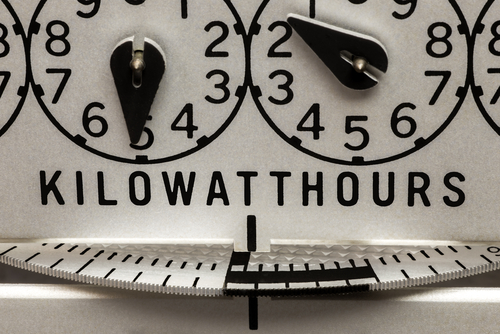 When you get your electricity and gas bills, chances are you look at what you owe—and pay it. You may even go the extra step of checking your meter reading to make sure it matches what you see at home.
When you get your electricity and gas bills, chances are you look at what you owe—and pay it. You may even go the extra step of checking your meter reading to make sure it matches what you see at home.
But if you’re like most people, you don’t do a deeper diver into your bill. If you did, you’d notice how many kilowatt hours (kWh) you’ve used—and that information could help you lower your bills.
If you want to lower your electricity bill, it’s important to know what “kW” and “kWh” mean—as is knowing the difference between the two.
The abbreviation “kW” is short for kilowatt—a unit of electrical power that equals 1,000 watts.
A kilowatt hour (kWh), on the other hand, measures an amount of power used over time.
While both are interrelated units of measurement, the important difference between kWh and kW is that a kWh reflects the total amount of electricity used, whereas a kW reflects the rate of electricity usage.
For example, you can use kWh to express the total energy consumed over, say, the course of a month—which is exactly what your energy bill does!
Why does all of this information matter to you as a consumer? Well, several reasons. Knowing what a kilowatt hour is can help you understand:
Armed with this information, you can make lifestyle changes and product choices that could dramatically lower your monthly energy use and bills. Understanding kWh can also help you when comparison shopping for energy providers.
What does one kWh of energy usage look like? It’s hard to say precisely without a direct measurement (more on that in a bit) but, in general, a kWh is equal to:
If you want to get a better idea of how much energy a particular appliance is using, there are two ways to do it.
Wattage ÷ 1,000 x hours used = kilowatt-hours used
So, for example, if you use a 2,000-watt heater for three hours,
If you used that space heater the same way every day for a month, you’d use 180 kWh (6 x 30).
The amount of energy you use depends on many factors: the size of your home, the number of people in your family, the number of appliances you’re running, and the efficiency of those appliances, to name a few.
According to the U.S. Energy Information Administration, the average annual electricity consumption for a U.S. residential utility customer was 10,649 kWh—an average of about 877 kWh per month. Louisiana had the highest annual electricity consumption, at 14,787 kWh per residential customer, and Hawaii had the lowest, at 6,296 kWh per residential customer (to see where your state ranks in the national scene for electricity use, check out this story).
The best way to use fewer kWh and reduce your bills is to make sure that your home and all your electrical appliances are working as efficiently as possible. Here are 10 of the best ways to do it:
Want another way to lower your electricity bill? Switch your plan to Discount Power! Enroll in one of our money-saving electricity plans online today, or contact us to learn more about our smart, affordable energy plans available in your place of residence!